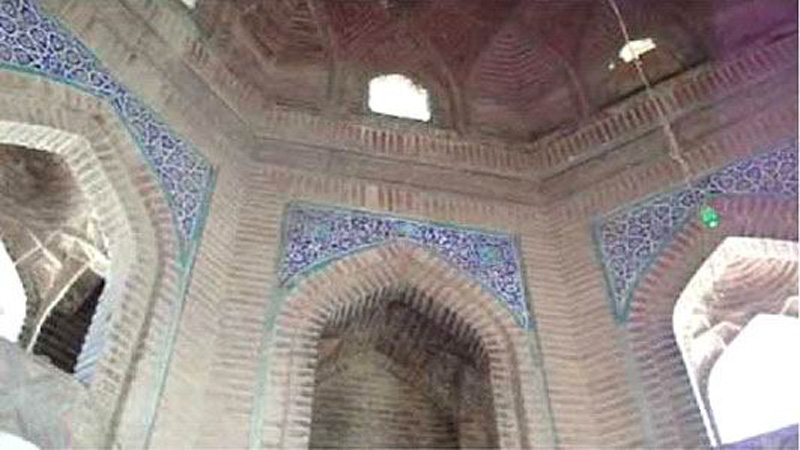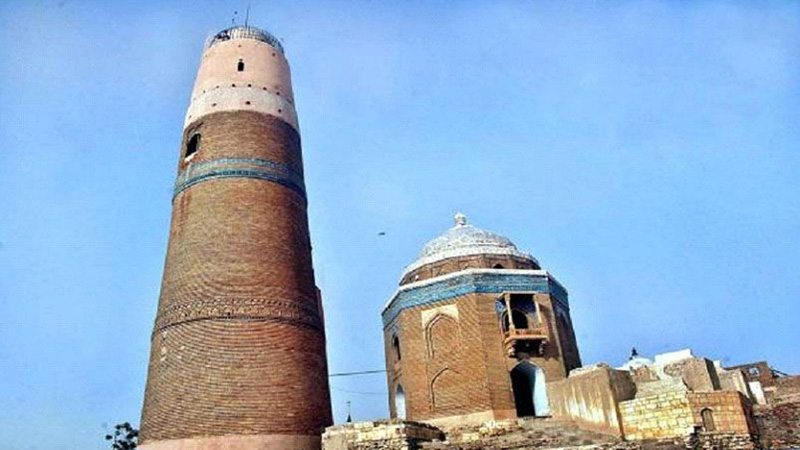
Masoom Shah, was a 16th-century Sindhi Muslim historian, physician, poet and pharmacist and is better known for writing two manuscripts on the history of Sindh, called “Tarikh-i-Sindh” and “Tarikh-i-Masoomi.” In 1598, Mughal Emperor Akbar, appointed him as the governor of Sindh and Sibi and the Nawab of Sukkur where he constructed a minaret now called the Minaret of Masoom Shah in 1617.
Syed Nizamuddin, known as Mir Muhammad Masoom Shah was born at Bakhar, near old Sukkur. He received his education from Allama Moulana Muhammad Bakar Rori and Moulana Muhammd Usman Kingri. Masoom Shah was at the time, a sixteenth-century Sindhi Muslim historian, physician, poet and pharmacist and is better known for writing the history of Sindh called “Tarikh-i-Sindh” and “Tarikh-i-Masoomi”, in Sindhi language. In 1598, Mughal Emperor Akbar the Great, appointed him as the governor of Sindh and Sibi, and the Nawab of Sukkur, where he constructed a minaret now called the Minaret of Masoom Shah.
His descendants still live in old Sukkur where he lived before and during his reign as the governor and nawab. The minaret and other architectural sites that he commissioned are now under the control of the Masoomi family. However, the government of Sindh has taken management control of this historical and monumental architecture.
The towering architecture of the minaret now known as the Minaret of Masoom Shah and called ‘Masoom Shah Jo Minaro’ in Sindhi language is situated in the heart of Sindh’s third biggest city, Sukkur. According to some historians, construction work of this building was initiated in 1594 and was completed in 1617. This structure is more and less conical in shape, slightly off the perpendicular and surmounted by a dome to which an internal stone staircase gives an access. The monumental structure is adorned with floral work and poetry of Mir Masoom Shah at main entrances. It has four storeys and each storey has one arch shaped opening for ventilation.
For the construction of the classical minaret, red bricks made of special stone were brought from Jaipur in present-day-India. The stone was crushed into powder form and then molded into bricks, which were boiled in oil. The bricks were plastered together with a mixture containing lentils, crushed bones of goats, cows and other animals, sand and water. The magnificent structure with 84 steps in the staircase is around 31 meters high, and around 26 meters in circumference. The minaret viewed easily from miles away is believed to have served as a watch tower.
Around the minaret, including the beautiful shrine of Mir Masoom Shah, there are a number of graves of his ancestors. The pavilions exquisitely adorned with Quranic verses and Persian inscriptions are made of red sand stones, red bricks marble and glazed tiles.
Regrettably, because of the lack of interest and negligence of the Sindh government, the unique architecture has been losing its originality and exquisiteness. The stairs have gotten slippery, the people have to pace up and down the stairway very carefully and slowly to avoid falling down.
 Repairing, renovation and maintenance work was done at the site 20 years back in 1998, by the Archeology Department of Sindh. The minaret generates a huge amount of money annually, as the Auqaf department charges visiting fees from the visitors.
Repairing, renovation and maintenance work was done at the site 20 years back in 1998, by the Archeology Department of Sindh. The minaret generates a huge amount of money annually, as the Auqaf department charges visiting fees from the visitors.
The writer is a freelance columnist from Shikarpur, Sindh
Published in Daily Times, November 2nd 2017.